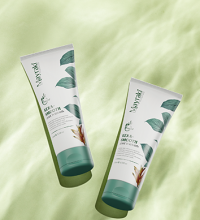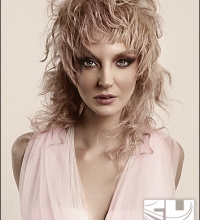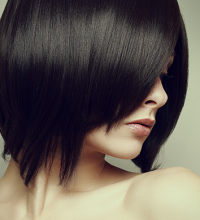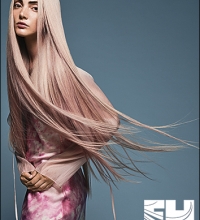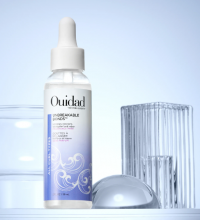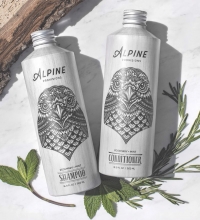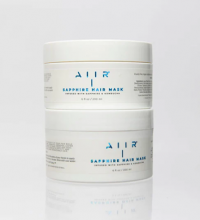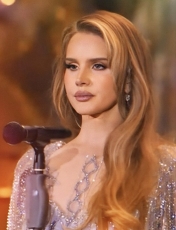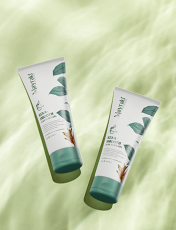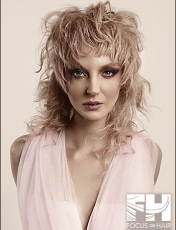Do you know your hair type? Is your natural texture stick straight, sort-of wavy, wavy curly, or super curly? Is it a mix of several textures? Do you know if your hair density (how much hair you have) is fine, medium or thick?
Also, did you know that hair texture and density work together to form a ‘hair type’? You might be surprised to find out that there are actually 12 distinctly different hair types that are categorized based on a combination of hair density from fine to thick and textures ranging from super straight to ultra-coarse, kinky curls. Who knew!
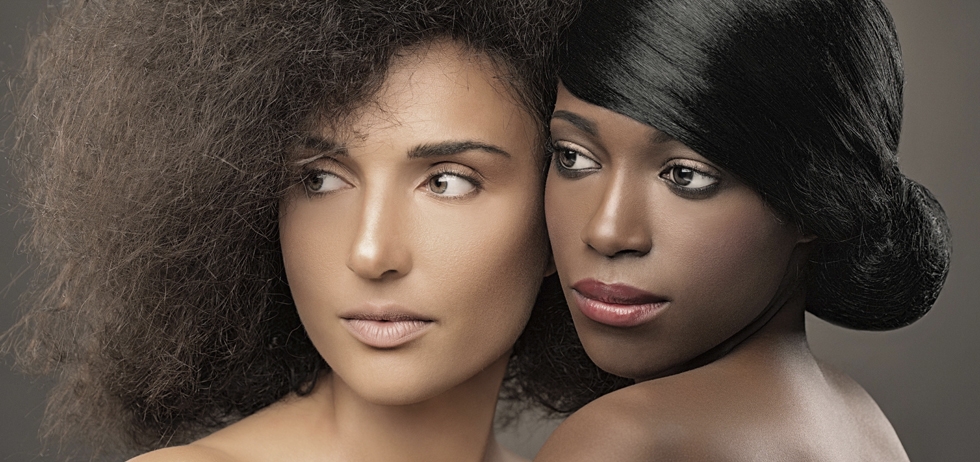
Originally developed by Andre Walker, a celebrity hairstylist known for his work with Oprah Winfrey and Halle Berry, this scale has seen several revisions over the years, but the core values remain the same. His method involves identifying the type of texture, which is dictated by the individual hair shape through the length, coupled with the amount or density of hair. Think in terms of what each individual hair strand looks and then how many of those hair strands you have overall.
Knowing your hair type really is the cornerstone to determining your hair care and daily styling regimen. To discover where your tresses fall on the scale, follow these easy steps. Simply wash your hair as you normally would, skip the styling products and let your hair air-dry. Take a good look in the mirror from all angles and then find the descriptor below that fits your hair texture and density the best. Let’s take a look…
Hair Types - Straight Hair
 Hair Type 1A
Hair Type 1A
This category involves straight, baby-fine hair. This texture / density combo tends not to hold a curl, usually lays flat, can easily look greasy, and can be very difficult to style. If this sounds like your hair, consider using a root boost for lift and volumizers for body. Stay away from heavy conditioners and styling products and go hair styling powders or dry shampoos for an afternoon pick-me-up.
Hair Type 1B
This type of hair tends to be a bit fuller with a slight amount of movement at the ends, but no discernable curl. To create some volume and needed texture, go for a dry texture spray when styling. You can add root boosters if desired, but do stay away from heavy conditioners or styling products as they can weigh your hair down.
Hair Type 1C
Primarily straight with a few waves on the underside, this texture type does take curl rather well. The hair tends to be very thick and is particularly prone to frizz. Use a thermal styling spray when adding curl or wave and a smoothing or anti-frizz serum before flat ironing when going for a sleek finish.
Hair Types - Wavy Hair
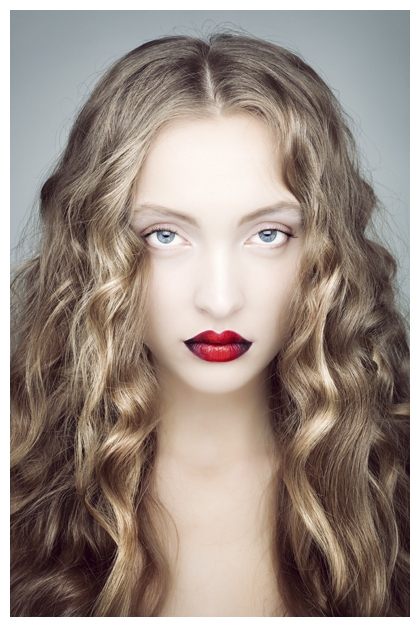 Hair Type 2A
Hair Type 2A
This hair type has a slight S-shaped wave through the length and tends to be fine / thin in density. Most people with this hair type straighten their strands to get a sleek look but if you want to make the most of your natural texture, add lightweight curl-enhancing products like a spray or foam and air-dry. If needed, wrap any limp pieces around a curling iron to finish off the look.
Hair Type 2B
More distinct S-shaped waves offer a hint of movement but tend to lack any volume. These waves can get frizzy if over-styled but without styling product can easily lose their shape. Use a leave-in moisturizing conditioner spray to combat the frizz and a lighter weight curl-enhancing product or volumizer to add body and lift where desired.
Hair Type 2C
If you have slightly more defined waves with sporadic curls throughout the head and a thicker density, you are sporting hair type 2c. Just like curlier hair types, these waves benefit from moisture and finger-styling. Add a lighter leave-in conditioner and layer on the curl-enhancing foam or lightweight styling lotion. Scrunch slightly and either air-dry or diffuse-dry.
Hair Types - Curly Hair
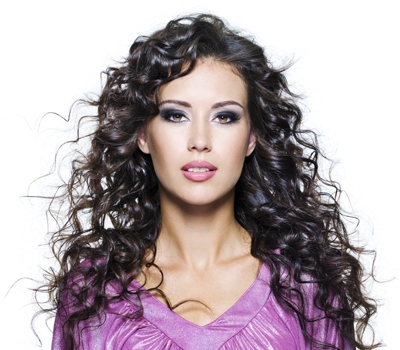 Hair Type 3A
Hair Type 3A
This hair type offers mostly larger curls with a looped, springy S-shape pattern that is well defined but can also have some wavy pieces in the mix. To get maximum curl definition, apply curl-enhancing lotion or gel to damp hair. Squeeze hair with a cotton t-shirt or microfiber towel to remove excess water and scrunch curls, pushing them toward the scalp. You can also twirl small sections around your finger while hair is still damp to encourage definition. This texture is also easy to straighten, but it's also susceptible to heat damage. In that case be sure to use a thermal spray to help protect your tresses before flat-ironing.
Hair Type 3B
Type 3B curls are tighter coils and include stretched-out spirals that cascade downward versus growing out and away from the head at the roots. This hair type tends to be dry, less shiny and the texture is dense and coarse. Be sure to moisturize your strands well with deep treatments at least once a week and consider a moisturizing leave-in conditioner when styling. Always use an anti-humectant (humidity blocking) styling cream for less frizz but more curl definition. It's best to add any styling products to this type of hair while damp and then let it air-dry naturally.
Hair Type 3C
The curls of this category are obvious because of the clearly defined corkscrew coils, however they are the thickest and are the most prone to frizz. Because of the dry nature of curls, condition well, do intense weekly treatments and for styling, add leave-in conditioner and anti-frizz serum to provide hydration and smoothness to your coils.
Hair Types - Kinky / Super Curly Hair
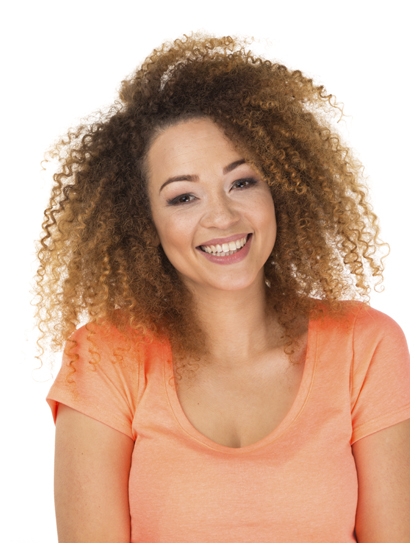 Hair Type 4A
Hair Type 4A
The 4A hair type involves a head full of tightly coiled S-shaped curls that are usually fine in density but can sometimes be wiry. This hair, when worn curly, can shrink down to under half its length when dry. These curls are more suseptable to damage, so consider co-washing and using a gentle cleanser as needed. After washing, use thicker leave-in creams to maximize your wash-and-go, twist-out, or bantu knot-out style.
Hair Type 4B
This hair type features Z-shaped kinks that are tightly coiled and can feel wiry to the touch. Hair can range from fine and thin to coarse with many strands packed densely together. Without the proper use of product, frizz can quickly take over. Pre-poo with natural oils to help nourish your hair and slather on leave-in moisturizing conditioners after cleansing. Use a t-shirt or microfiber towel to blot hair after washing, as terrycloth towels can cause friction. For styling, you can add light gels and moisture-rich styling butters mixed with a small amount of shine serum and then twist sections before allowing to air-dry. Once dry, slightly pull on the section to release the curl and even work through each section with more shine serum for curl definition.
Hair Type 4C
When you think of 4C hair, think picked-out 70s Afro. There is no distinct curl pattern, which makes this hair type hard to get definition and extra difficult to detangle. Type 4c hair can range from fine, thin, and soft to coarse with densely packed strands and can look identical to 4b except that the curls are tightly kinked. This hair can shrink more than 75% when worn in its natural form.
The only way to get defined styles for this hair type is by using a fair amount of product and skilled styling techniques. To style, use a creamy leave-in conditioner to moisturize and provide protection and then work in a curl-defining custard or gel that can safely draw out and control the coils for twist-outs and braid-outs.

